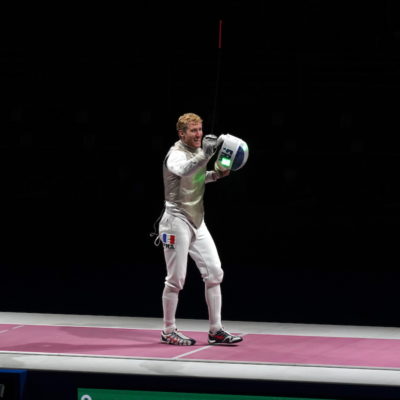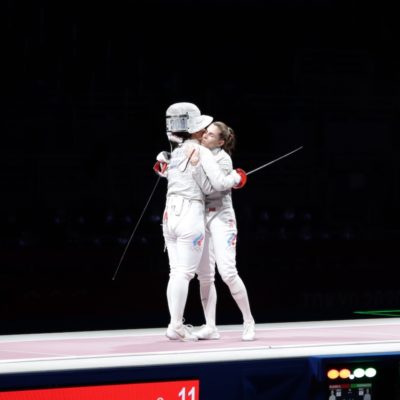The current substitution rules for fencing in the Olympic Games work a little differently than any other normal team fencing competition. In the Games, if you sub someone in, it’s permanent. They stay in for the remainder of the event. This is different from normal substitution rules, as in a normal team competition, the substitution resets every match, and even during the same match the original fencer can return for one more bout.
Worth noting is that this was changed for the 2012 London games – previously the Olympic Fencing team rules were even more restrictive. Previously no tactical substitution was allowed – subbing was only possible either before a match began or for a verified medical issue. Now this requirement is gone, but the remainder of the rule is still present.
Presumably the International Olympic Committee does this in order to limit the number of medals they hand out and restrict the prestige of the title of “Olympian”. Alternates aren’t considered “Olympians” until they’re tagged in, nor do they receive a medal if the team does well unless they actually fenced. This situation creates a few problems.
It makes the Team events materially different from the standard Fencing team event ruleset. It’s possible to make a more unrestricted tactical use of your team’s alternate in a normal team event. Tag them in against a fencer you know they’re strong against, for example, knowing that you’ll be able to reset this choice either later in the match or when the next match begins. This is much less viable of an option in the Olympics, because instead of a temporary change, it is both permanent from a tactical standpoint and also opens up greater risk of a later loss caused by injury. It takes away a dimension of play available in every other World Cup, Grand Prix, or World Championship level team bout.
This rule unique to the Olympics creates situations where injured fencers are forced to continue to fence when they would otherwise have substituted out. At the Olympics this year in Tokyo, at least two bouts were fenced with an injured fencer because the team had already used their substitute – the ROC vs France final in Women’s Foil where Marta Martyanova was forced to fence with an injured foot and was wheelcharied out of the venue afterwards; and the USA vs Iran placement bout in Men’s Saber where Daryl Homer was forced to fence essentially on one leg for a bout and a half with a pulled groin/hamstring, resulting in a US medical forfeit in their next round. Additionally, Germany medically withdrew from their final match, likely for similar reasons. This rule puts athletes in a position where they are encouraged to continue to fence, risking further, more grievous or permanent injury. Rules that put athletes at risk of severe injury are not in the spirit of the Olympics.
Finally, it isn’t even an effective rule for the purposes the IOC has for it – not in Fencing, at least. Teams in their final matches will tag in their substitutes in order to grant them a medal or the Olympian title. It requires very little sacrifice on the part of the team to do so, particularly because of the placement rounds in the Olympics gives teams a risk free opportunity to sub if they aren’t in medal contention. Only on rare occasion does a team not do this, and it usually only happens if it might put the team at a tactical disadvantage in the Gold medal bout. The rule being in place has prevented very few medals or “Olympian” titles from actually being handed out.
The IOC have been loosening up other team event rules, with justifications purportedly similar to the ones outlined above. They just didn’t extend this change to Fencing in the 2020 Games.
This Olympics-specific team substitution ruleset is almost completely ineffective to its intended purposes and in many situations actively dangerous to athletes. It needs to go, and be replaced with normal team rules.






